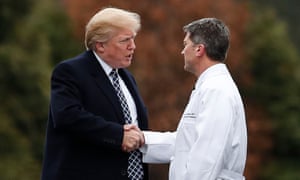By Mike Dolan
LONDON (Reuters) - Central banks may not be out of ammunition just yet but parts of their strategic policy rethinks related to inequality and fairness raise questions about the extent they should use it.

Small toy figures are seen in front of an Economy and stock graph logo in this illustration taken, September 9, 2020. REUTERS/Dado Ruvic/Illustration
Ever since the last financial crisis 12 years ago, investors have fretted about a moment when central banks - having floored borrowing rates to zero or below and ballooned their balance sheets - would simply run out of ways to support increasingly indebted economies and panic-prone markets.
The massive monetary response to this year’s pandemic shock to date showed there’s plenty still in the armoury. Policymakers insist they have more firepower if needed and both the Federal Reserve and European Central Bank are now loosening long-term inflation or employment goals as additional policy guidance.
But with borrowing rates already so low, and with a reluctance to go deeply negative for fear of undermining banking systems, ever-more purchases of government bonds and other assets is the only practical tool left to meet the rising list of increasingly more vague goals in any fresh downturn.
While that’s still useful to cap interest bills on exploding government debt or to support credit markets, it also risks exaggerating wealth inequality - something economists partly blame for putting central banks in this cul-de-sac to start off with.
The emphasis last month in the Fed’s strategic policy review on monitoring inequality in its pursuit of an enhanced full employment goal is getting more attention as a result.
Bastien Drut, strategist at Amundi-owned CPR Asset Management, argues that working to reduce inequality aims to give the Fed more policy room over time by helping re-establish better relationships between employment, wages and inflation.
“One of the problems posed by rising inequalities is that it contributes to the fall in the real natural (interest) rate,” he wrote. “As the natural rate has already fallen sharply in recent years, the rise in inequalities is tending to erode the Fed’s leeway.”
One of the macroeconomic puzzles of the past decade has been the inexorable decline in the “natural” rate of interest - the theoretical rate that keeps economies at full employment with stable inflation, or a rate above or below which policy rates are either a drag or spur for activity and prices.
As wage growth for large swathes of workers in developed countries has stalled over the past 10-15 years despite the lowest jobless rates in a generation, inflation and expectations of it also went missing in action. The presumed natural interest rate slumped - by many estimates to less than zero, even through 2019.
As a result, the only way central banks could get policy rates to stimulate growth and inflation was to either get rates to unprecedented sub-zero levels below that natural rate - something most seem unwilling to do - or ramp up bond-buying and asset purchases to loosen financial conditions another way.
The leftfield shock from COVID-19 provided that test, and central banks responded mostly with asset purchases once any remaining positive policy rates were removed - action that helped reverse a plunge in stock and bond markets despite unemployment rates that are still more than double pre-pandemic levels.
COVID GAPS
But the net result is both the pandemic, and perhaps the central bank response to it too, likely exaggerated inequality - and central banks may reasonably wonder if they can keep it up.
Fed data out this week showed U.S. income inequality narrowed slightly in the three years before the pandemic, but it said wealth inequality was unchanged in that period, with the richest 25% of families holding more than 90% of the nation’s wealth, and the bottom 25% having less than 1% of it.
Both income and wealth measures likely worsened this year. Washington think-tank the Institute for Policy Studies, for example, estimated U.S. billionaires increased their worth by over $800 billion or almost 30% in the six months to September.
And the COVID shock is widely expected to have hit low-income workers hardest - part-time staff, younger cohorts, those unable to work remotely and those in retail, transport or hospitality jobs.
HSBC economists this week said a disproportionate hit to young workers in particular could hit wage growth significantly, citing studies showing ageing workforces over the past decade may have been one aspect suppressing wage inflation as older workers may have higher earnings but weaker bargaining power.
“They (young workers) are also less likely to have benefited from the distributional consequences of central bank quantitative easing given they are less likely to own equities, other financial assets.”
And so when Fed chair Jerome Powell now talks of a “maximum employment” goal as not a single number but as a qualitative judgement mindful of disparities between ages, genders, races and communities, he’s partly responding to criticism that the Fed tightened policy too early in 2017/18, before all groups had experienced similar levels of low unemployment.
But it’s hard to see how central bank asset purchases don’t just aggravate the problem as much as help it.
Underwriting the debt of governments who do have the means to address these gaps - even if not always the willingness - is one key route. But ensuring their political masters use the fiscal space is a harder task in the messier world of advocacy and politics, and will make parsing the course ahead trickier.
Graphic: Central bank assets: reut.rs/3aDxo8U
Graphic: Median family net worth by race: tmsnrt.rs/3kRPecY
The author is editor-at-large for finance and markets at Reuters News. Any views expressed here are his own.
by Mike Dolan, Twitter: @reutersMikeD; Editing by Prav






